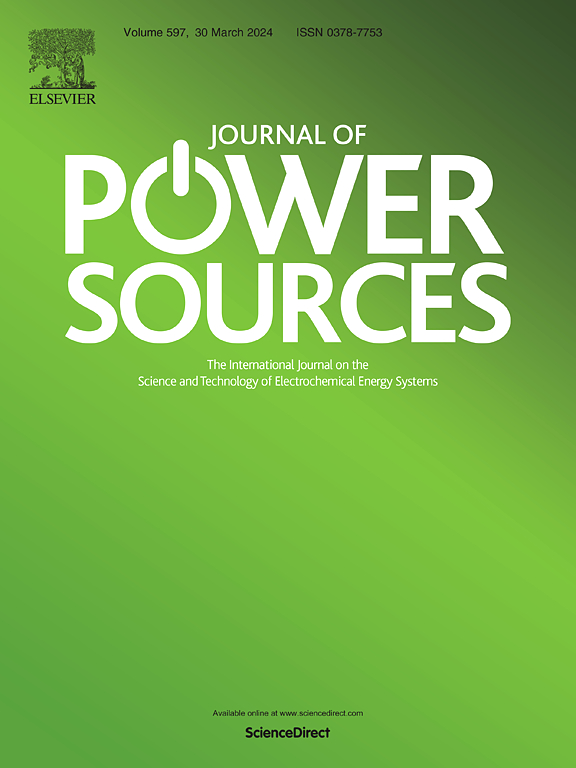An adaptive energy management method based on Pontryagin's minimum principle with real-time traffic information for plug-in hybrid electric vehicles
IF 8.1
2区 工程技术
Q1 CHEMISTRY, PHYSICAL
引用次数: 0
Abstract
This study addresses the key challenge of velocity prediction for hybrid vehicle in intelligent network environment, proposing an innovative solution that incorporates real-time traffic information. Based on Long Short-Term Memory neural network and real-time traffic data (LSTMRT), a novel velocity prediction model is developed, which uniquely integrates three key real-time traffic elements: the ego-vehicle status, the traffic signal states, and the dynamics of surrounding vehicles. By analyzing the impact of structural parameters on prediction performance, a pioneering application of transfer learning is made to resolve the problem of model retraining due to driver differences, thereby enhancing the generalization capability of the model. Furthermore, an Adaptive Pontryagin's Minimum Principle (APMP) control strategy based on LSTMRT (LSTMRT-APMP) is proposed, which achieves online optimal power distribution for plug-in hybrid powertrains. Simulation results demonstrate that compared with the state-of-the-art prediction models, LSTMRT improves prediction accuracy by at least 68 % in various driving cycles, and after transfer learning, the prediction accuracy for new drivers can be further increased by 44.83 %. Comprehensive validation under four different driving cycles and SOC intervals confirms the exceptional performance of LSTMRT-APMP in fuel economy (at least 8.77 % improvement), real-time capability (maximum computing time is only 4.67 ms), charge sustainability, and robustness.
基于Pontryagin最小值原理的插电式混合动力汽车实时交通信息自适应能量管理方法
针对智能网络环境下混合动力汽车速度预测的关键挑战,提出了一种融合实时交通信息的创新解决方案。基于长短期记忆神经网络和实时交通数据(LSTMRT),建立了一种新的速度预测模型,该模型独特地集成了车辆自我状态、交通信号状态和周围车辆动态三个关键的实时交通要素。通过分析结构参数对预测性能的影响,开创性地将迁移学习应用于解决由于驱动因素差异导致的模型再训练问题,从而提高模型的泛化能力。在此基础上,提出了一种基于LSTMRT的自适应庞特里亚金最小原理(APMP)控制策略(LSTMRT-APMP),实现了插电式混合动力系统的在线最优功率分配。仿真结果表明,与目前最先进的预测模型相比,LSTMRT在不同驾驶周期下的预测精度提高了至少68%,并且经过迁移学习后,对新驾驶员的预测精度可进一步提高44.83%。在4个不同的行驶周期和SOC间隔下的综合验证证实了LSTMRT-APMP在燃油经济性(至少提高8.77%)、实时性(最大计算时间仅为4.67 ms)、充电可持续性和鲁棒性方面的卓越表现。
本文章由计算机程序翻译,如有差异,请以英文原文为准。
求助全文
约1分钟内获得全文
求助全文
来源期刊

Journal of Power Sources
工程技术-电化学
CiteScore
16.40
自引率
6.50%
发文量
1249
审稿时长
36 days
期刊介绍:
The Journal of Power Sources is a publication catering to researchers and technologists interested in various aspects of the science, technology, and applications of electrochemical power sources. It covers original research and reviews on primary and secondary batteries, fuel cells, supercapacitors, and photo-electrochemical cells.
Topics considered include the research, development and applications of nanomaterials and novel componentry for these devices. Examples of applications of these electrochemical power sources include:
• Portable electronics
• Electric and Hybrid Electric Vehicles
• Uninterruptible Power Supply (UPS) systems
• Storage of renewable energy
• Satellites and deep space probes
• Boats and ships, drones and aircrafts
• Wearable energy storage systems
 求助内容:
求助内容: 应助结果提醒方式:
应助结果提醒方式:


